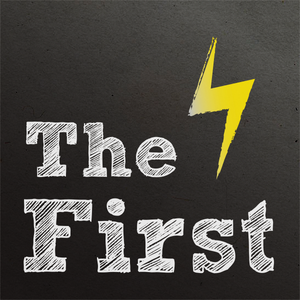
The First: Stories of Inventions and their Consequences
Bowery Boys Media
Stories of Inventions and their Consequences
- 25 minutes 21 secondsThe First Apartment Building in America (A Stuyvesant Story)
Apartment living is something we take for granted today, the option for those who can't afford or don't desire a private home. But how did this type of living situation become popular in the United States?
In mid-19th century New York, people lived in townhouses, boarding houses or tenements. But far-thinking urban planners like Calvert Vaux touted a new form of housing popularized by the French -- the flat. Rutherford Stuyvesant, the wealthy heir of a couple notable American families, decided to build a version of this type of housing in the elite neighborhood of Gramercy Park.
But how to attract people to a risky form of living? You get celebrities to move in! In particular, one very well known person -- Elizabeth Custer, the wife of General George Custer, newly widowed after her husband was killed in the Battle of Little Bighorn.
A version of this podcast was originally presented on The Bowery Boys: New York City History podcast
3 January 2018, 2:22 pm - 34 minutes 21 secondsThe Lost Highway: America's First Cross Country Road
In 1900, there were about 8,000 registered automobiles in the United States. They were a genuine novelty. Those that attempted to go on 'road trips' met with a frustrating reality -- there were no drivable roads, no unified road maps, no nation-wide infrastructure of gas stations or amenities. The first automobiles to attempt cross-country travel were essentially UFOs streaking through a sparsely populated and isolated America.
This is the story of how that all changed. This is the story of the Lincoln Highway, the first cross-country road in the Untied States, linking Times Square in Manhattan with Lincoln Park in San Francisco via a patchwork of pre-existing roads in twelve states.
The Lincoln Highway was developed by automotive executives who wanted to use the cross-country road to promote automobile sales. It accomplished more than that; the Lincoln Highway invented the pleasures and eccentricities of American road travel.
21 December 2017, 11:10 pm - 28 minutes 51 secondsHow Electric Light Changed Christmas Forever
That string of multi-colored Christmas lights wrapped around your tree (or your house) is far more influential to American history than you might think.
The first electric Christmas lights debuted in 1882, shortly after the invention of the incandescent light bulb itself, in the New York home of a Thomas Edison employee. They quickly became a vehicle for electric companies to tout the magic of electrical power.
In the process, they helped secularize very basic symbols of the Christmas season. In this episode, find out how the invention of whimsical colored lights helped redefine the holiday and create comfort and unity for millions of Americans.
PLUS: The origin story of those 'classy' lights you see wrapped around trees and lampposts on respectable urban avenues.
7 December 2017, 2:41 am - 31 minutes 30 secondsThe Plant Doctor: The Extraordinary George Washington Carver
How much do you know about George Washington Carver, the man born into slavery who became America’s most famous botanist in the first half of the 20th century? He didn’t discover the peanut, a legume commonplace in the human diet for thousands of years, nor did he invent peanut butter. What Carver did – and what he remains underappreciated for – was help reorient man’s relationship with plants for the modern world.
He saw items like the sweet potato and the soybean for their unlimited potentials, not just to better the human condition but to improve the opportunities of American farmers. He saw plants as the secret to human health and well being.
And he did these things not merely as an African-American man in the Jim Crow South, but as a man of frequent ill health and eccentric character. He was as miraculous as his inventions.
George Washington Carver as an artist of uncommon tools – both a literal artist, armed with plant-based paints of his own design, but a conceptual one, finding a world of new ideas within the palette grown from his garden. He became the world’s most famous proponent for organic eating.
CO-STARRING: Booker T. Washington, Henry Ford and -- Mahatma Gandhi?!
6 October 2017, 5:41 pm - 30 minutes 16 secondsThe Real Housewives of Early America: The Story of the First American Cookbook
“Over the river and through the woods” into the history of early American cuisine.
The first published European cookbooks in the world weren’t meant to enshrine ideal meals but rather to inform a woman of her place in the household with titles like The English Housewife, The Compleat Housewife, The Frugal Housewife. But for American cooks, they lacked any ingredients that were native to the American colonies.
In 1796 a mysterious woman named Amelia Simmons published American Cookery, the first compilation of recipes (or receipts) using such previously unknown items as corn, pumpkins and ‘pearl ash’ (similar to baking powder). This book changed the direction of fine eating in the newly established United States of America. But Amelia herself remains an elusive creator.
Join Greg through a tour of 70 years of early American eating, identifying the true ‘melting pot’ of delicious flavors -- Dutch, Native American, Spanish, Caribbean and African -- that transformed early English colonial cooking into something uniquely American.
FEATURING early American recipes for johnnycakes, slapjacks and gazpacho!
21 September 2017, 10:03 pm - 40 minutes 6 secondsThe Rebel: America's Founding Inventor
Benjamin Franklin was the most famous American in the world by the time of the Revolutionary War, known as a writer, inventor and philosopher. But as an old man, he would earn another title -- rebel.
By the time of the Boston Massacre, Dr. Franklin was already an elderly man, watching the early days of American unrest from his comfy home in London. His scientific experiments were eventually put on hold as he rushed back to the colonies to help set up the mechanism of independence.
But while others went to war, Franklin went -- to France? It was because of his great celebrity that he was deployed on an unusual mission to court an important ally for George Washington and his Continental Army. And it was in the banquet halls and libraries of Paris that Franklin would actually invent one of his useful creations.
STARRING: Mesmer, Marie Antoinette, Voltaire and all the Founding Fathers!
Part Three of The Invention of Benjamin Franklin. Check the two prior episodes to catch up on his extraordinary story.
25 August 2017, 3:09 am - 30 minutes 30 secondsLightning Strikes: Benjamin Franklin's Philadelphia Experiment
How much do you know about one of the most famous scientific experiments in American history?
In 1752 Benjamin Franklin and his son William performed a dangerous act of experimentation, conjuring one of nature's most lethal powers from the air itself. This tale -- with the kite and the key -- has entered American urban legend. But it did not happen quite the way you learned about it in school. (Did you know somebody died trying to duplicate Franklin's astonishing feat?)
In this second chapter of The Invention of Benjamin Franklin, the inventor becomes an international celebrity thanks to his clear writing style and pragmatic outlook. Not only would he change the field of electrical sciences, he would even change the English language.
PLUS: London inspires the invention of a beautiful glass instrument, capturing the music of the 18th century.
11 August 2017, 4:44 am - 34 minutes 59 secondsFranklin Gothic: The Invention of Benjamin Franklin
Benjamin Franklin did more in his first forty years than most people do in an entire lifetime. Had he not played a pivotal role in the creation of the United States of America, he still would have been considered an icon in the fields of publishing, science and urban planning.
How much do you know about Benjamin Franklin the inventor? In this podcast (the first of three parts), Greg takes a dive into his early years as a precocious young inventor and writer, a witty and determined publisher, and a great mind in search of the natural world's great mysteries.
FEATURING: The origins of the lending library, the Franklin stove, swim fins and even kite-surfing!
28 July 2017, 12:10 am - 30 minutes 28 secondsThe Secret History of Soft Drinks: A Tale In Four Flavors
There is something very, very bizarre about a can of soda.
How did this sugary, bubbly beverage – dark brown, or neon orange, or grape, or whatever color Mountain Dew is – how did THIS become such an influential force in American culture?
This is the strange and inconceivable story of how the modern soft drink was created. It's a story in four parts --
1) At the start of the 19th century, two dueling soda fountains in lower Manhattan would set the stage for a century of mass consumption.
2) Soft drinks weren't just tasty. For over a century, many believed they could provide a litany of cures to some of man's most vexing ills. It's from this snake-oil salesmanship that we get many of today's top soft-drink brands.
3) Coca-Cola may pride itself on its 'secret formula', but in fact that formula has frequently changed since the 1880s, when a Confederate war veteran first invented this magical brew mixing three exotic ingredients -- cocaine, wine and kola nut.
4) Soft drinks have professed to relieve many physical ills. By the 1950s they even attempted to promote weight loss. But the rise of diet drinks sparked a marketing war with manufacturers of one of their most reliable (and delicious) ingredients.
20 June 2017, 2:24 pm - 23 minutes 33 secondsThe Devil and The First Broadway Musical
The Black Crook is considered the first-ever Broadway musical, a dizzying, epic-length extravaganza of ballerinas, mechanical sets, lavish costumes and a storyline about the Devil straight out of a twisted hallucination.
The show took New York by storm when it debuted on September 12, 1866. This is the story of how this completely weird, virtually unstageable production came to pass. Modern musicals like Phantom of the Opera, Wicked, and Hamilton wouldn't quite be what they are today without this curious little relic.
WARNING: You may leave this show humming a little tune called "You Naughty, Naughty Men."
Featuring music by Adam Roberts and Libby Dees, courtesy the New York Public Library for the Performing Arts.
https://www.nypl.org/blog/2011/10/07/musical-month-listen-music
1 June 2017, 11:10 pm - 23 minutes 58 secondsThe Bowery Wizards: A History of Early American Tattoos
The art of tattooing is as old as written language but it would require the contributions of a few 19th century New York tattoo artists -- and a young inventor with no tattoos whatsoever -- to take this ancient art to the next level.
This is the story of the electric tattoo machine, how it was first perfected in a tiny tattoo parlor underneath a New York elevated train and how this relatively simple device changed the face of body art forever.
Subscribe to The First podcast on iTunes or stream it on Stitcher, Overcast or other podcast streaming services. Thanks for listening! -- Greg
19 May 2017, 2:36 am - More Episodes? Get the App
Your feedback is valuable to us. Should you encounter any bugs, glitches, lack of functionality or other problems, please email us on [email protected] or join Moon.FM Telegram Group where you can talk directly to the dev team who are happy to answer any queries.
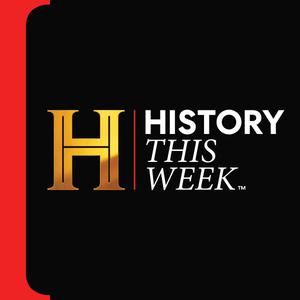 HISTORY This Week
HISTORY This Week
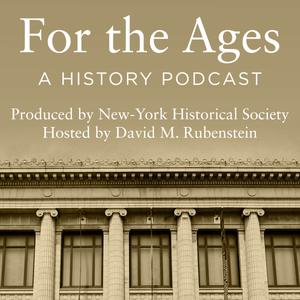 For the Ages: A History Podcast
For the Ages: A History Podcast
 The Gilded Gentleman
The Gilded Gentleman
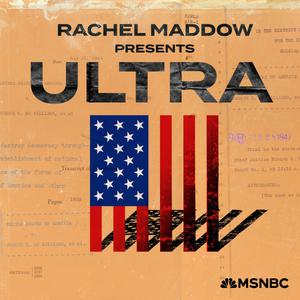 Rachel Maddow Presents: Ultra
Rachel Maddow Presents: Ultra
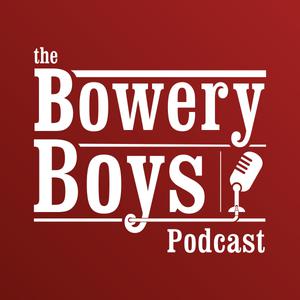 The Bowery Boys: New York City History
The Bowery Boys: New York City History
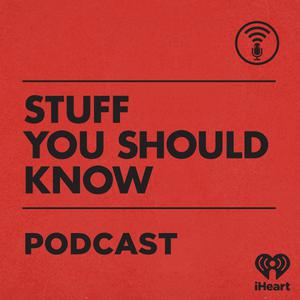 Stuff You Should Know
Stuff You Should Know